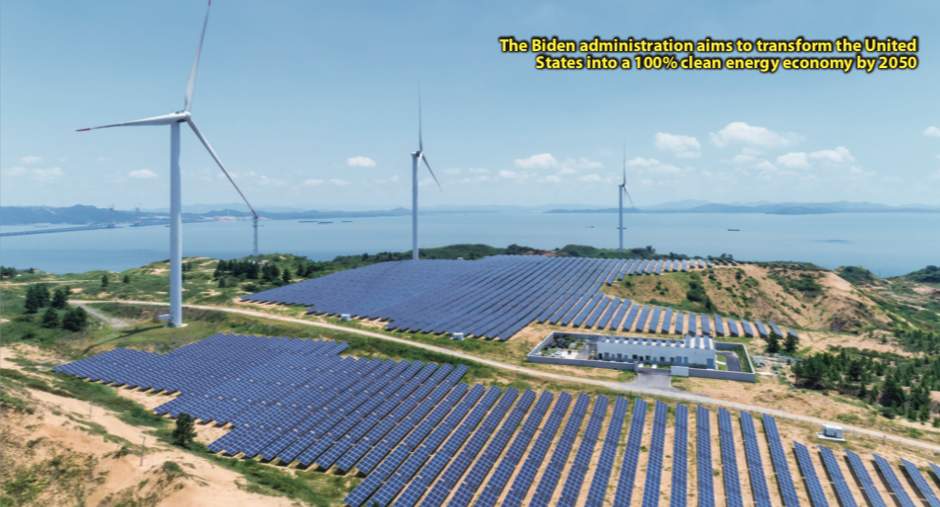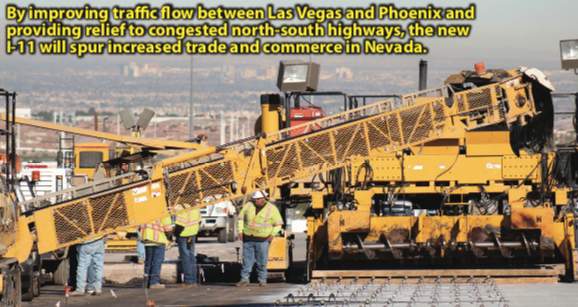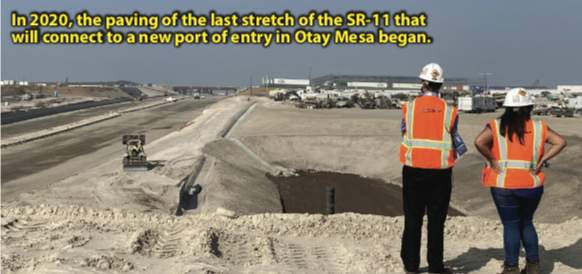Infrastructure Plan May Uplift U.S.-Mexico Border

By Nancy J. Gonzalez
U.S. President Joe Biden recently introduced a US$2 trillion plan to overhaul and upgrade the nation’s infrastructure, calling it a transformational effort that could create the “most resilient, innovative economy in the world.”
While the plan does not list specific projects, it does mention the amounts the president is proposing for each sub-sector. These range from highways and bridges to urban transport, railways, airports and ports, in addition to the country’s electric vehicle infrastructure.
The plan outlines US$115 billion to modernize bridges, highways, roads and main streets; US$85 billion to upgrade existing public transportation; US$174 billion to spur the electric vehicle market; US$80 billion for repairs and upgrades to rail networks; US$25 billion for airports; and an additional US$17 billion in inland waterways, coastal ports, land ports of entry and ferries, among others.
President Biden has laid out an outline of his vision. Now, it will head to the U.S. House of Representatives and then the Senate. If passed into law, the states will submit applications articulating their needs and what projects they will most benefit from.
The fact sheets provided in the plan for every state show Arizona and Texas got a C in infrastructure, while California got a C-. New Mexico doesn’t have a grade in infrastructure, but its fact sheet shows the legend: “for decades, infrastructure in New Mexico has suffered from a systemic lack of investment.”
The southern border states are vigilant of this infrastructure plan because the projects listed on the proposal might help them fund projects that have been proposed for a long time.

In Texas, the Ike Dike comes into mind as a viable project for this infrastructure plan. The project—named for Hurricane Ike, a Category 2 storm that devastated Houston in 2008—calls for a series of coastal barriers, levees and dunes in the Gulf of Mexico that would work as a buffer, absorbing storm surge from incoming hurricanes and minimizing damage. The Army Corps of Engineers estimates the coastal wall would save an average of US$2.3 billion in storm damages per year.
“What I am talking about now, what Texans have been talking about for a decade, is a plan to prevent a potential human and environmental catastrophe unlike any this country has ever seen,” Representative Lizzie Fletcher said while testifying recently in support of the Ike Dike before the House Committee on Transportation and Infrastructure.
Meanwhile, in California, the energy sector stands to gain a lot from President Biden’s infrastructure plan, which would set aside billions of dollars for the electric grid. Biden’s American Jobs Plan includes a US$100 billion investment in the power grid, including tax credits to incentivize the deployment of at least 20 GW of high-voltage capacity power lines, as well as extending and expanding tax credits for clean energy resources, including energy storage.
The plan has been criticized by the Republican leadership in Congress as being too expensive, but clean energy advocates, including those in California, are optimistic that the proposed investments could go a long way in building out transmission and deploying more storage, advancing some of the key building blocks to California’s goal to reach 100% zero-carbon electricity by 2045.
Arizona has some other plans of its own, focusing on connectivity. Nathan Pryor, Policy and Government Relations Director for the Maricopa Association of Governments, said as a fast-growing region, the greater Phoenix area is a prime candidate for investment in the president’s proposed American Jobs Plan.
One of the biggest proposals is to extend the I-11 highway from Phoenix to Southern Nevada. Variations of the plan would connect Nogales to Wickenburg and then to Las Vegas. The extension would alleviate commercial traffic and make the road trip to Las Vegas a lot more convenient.
“These are historic times, so a lot of big-dollar proposals are coming out,” Pryor added.

Moreover, New Mexico might benefit from this plan by creating manufacturing and clean energy jobs. The White House’s factsheet for New Mexico highlights the plan will invest US$300 billion to retool and revitalize American manufacturers, including providing incentives for manufacturers to invest in innovative energy projects. Manufacturers account for more than 4% of total output in New Mexico and an intense manufacturing activity is done in Santa Teresa. The plan also aims to switch to clean energy manufacturing.
But the economic benefits of this plan might go beyond the U.S. Southern border communities. If President Biden manages to obtain financing from Congress for his infrastructure plan, Mexican companies could also benefit from heavy investments in projects such as border crossing facilities, experts agreed.
Jon Barela, CEO of The Borderplex Alliance, explained investments in ports of entry, like other communications and transportations projects in the U.S., are long overdue.
“We need to take advantage of the US$681 billion that is being set aside for roads and bridges and invest it in more modern and efficient ports of entry. That will benefit both countries, but particularly Mexican businesses,” he said in an interview.
Planning to improve border crossing infrastructure has actually been underway for some time now, and there are a few projects that are just waiting to be approved in order to start works. One of these includes the construction of a second overland port of entry between Otay and San Diego, called Otay Mesa II. Still, the plan is in its early stages and getting it through Congress as legislation could face challenges, given the initial response from Republican leaders and the slim majority Democrats hold in the Senate. The Biden administration is working to convince Republicans to back his bill, which would be financed by raising corporate taxes and eliminating tax breaks for fossil fuels.
On the other hand, voters back Biden’s infrastructure plan, 57% for democrats to 24% for Republicans, according to a Politico poll. Also, one out of every four Republicans said they support it.
Experts expect that a lot of the plan might be passed through the budget reconciliation process, although there likely won’t be much movement on it until July.
